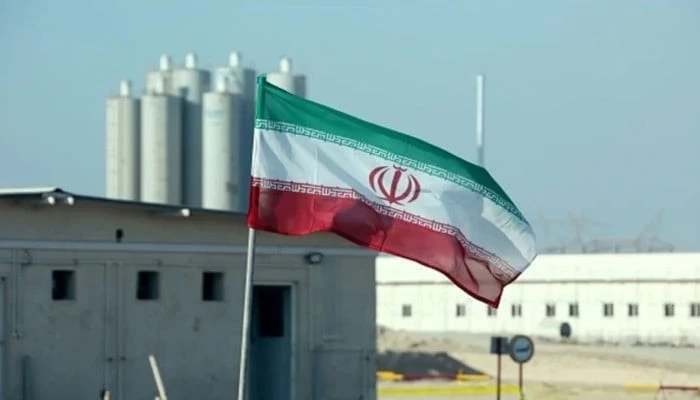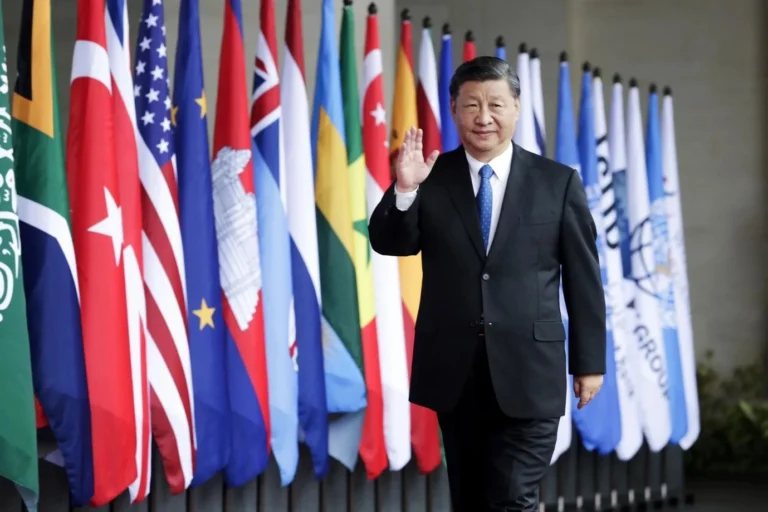A Strategic Investment in Sovereignty, Stability and Peace

The defence budget of Pakistan in the fiscal year 2025-26 is Rs 2.55 trillion higher representing a 20 percent increase compared to the last defence budgets. Amid ongoing debates, it is one of the testimonies to the resolute stand of Pakistan to maintain its sovereignty and regional security in a hazardous geopolitical situation. Thereby, the government decision to place defence expenditure above all other pressing priorities is a well thought out and planned policy instead of an emergency change in policy. This is coupled with intensified regional politics and consequently the rising allocation in defence with a direct impact of blistering militarization and agitative role of India across the Line of Control (LoC). Moreover, the unresolved Kashmir issue and the emerging concerns of internal unrests and terrorism are also a case in point.
Traditional enmity between Pakistan and India which is supported by wars in the 1947, 1965, 1971, and the Kargil war in the year 1999, have made the two countries to regard each other with utmost suspicion. Likewise, the remnants of these battles together with the fact that India enjoys substantial military superiority over Pakistan made country to enhance her defensive capabilities in the name of credible deterrence. In May 2025, Pakistani military staged a four-day standoff with India after a false-flag operation in Pahalgam. This flare up had a startling reminder to all concerned in Pakistan about how precarious the peace could be in South Asia. The ability of Pakistan to achieve a measured though successful defence despite the sheer military superiority of India provided a confirmation of the success of the doctrine of credible deterrence by Pakistan. However, currently requiring constant investment in terms of modernization, preparedness, and technological updating.

An essential hallmark of this defensive posture is the nuclear capability of Pakistan, which counterbalances India in manpower and conventional armed forces. In addition, the strategic deterrence of Pakistan revolves around its nuclear triad which includes land-based platform containing missiles like the Shaheen and Ghauri family, air-based systems, and sea-based platforms. Such systems ensure that any traditional military adventurism by India will attract a crushing reprisal hence keeping the region stable under the balance of terror. Moreover, investment programmes in missile technology, command and control infrastructure, and secure second-strike capability continue to be vital and credible as far as potential opponents are concerned. In this strategy, the Ababeel missile, with its multiple independently targetable re-entry vehicles (MIRVs) capability, and the Babur cruise missile systems will form the core of this strategy, allowing Pakistan the flexibility of both conventional and strategic response strategies. Furthermore, there have been constant efforts to raise underlying Pakistani conventional military forces with significant budgetary provisions channelled to modernisation of Pakistan Air Force, Navy and the Army.

Note: Figures are estimates and vary slightly between sources (SIPRI, IISS).
To strengthen its air superiority, the defence budget provided Rs 520.75 billion to the Air Force so it can claim its skies against the enemy. The relatively small Pakistan Navy is being given Rs 265.97 billion to bring its fleet to modern standards as well as to protect the sea lanes of communication. Likewise, the economic interests of the country such as the China Pakistan Economic Corridor (CPEC) and Gwadar port which are strategic assets that will define the economic and geopolitical future of the country. Moreover, there are additional signs that Pakistan has not been oblivious of the shift in the dynamics of modern war and how they are likely to evolve in the future as there have been new investments in the domains of cyber defence, electronic warfare, and drone technology.
| Serial | Category | Pakistan | India | Comparison / Notes |
| 1. | Defense Budget (2025) | $9.18 Bn | $80+ Bn | India spends 9 times more |
| 2. | Defense Budget (% of GDP) | 1.97% | 2.3% | |
| 3. | Total Armed Forces Personnel | 1.7 Mn | 5.1 Mn | India has 3 times more personnel |
| 4. | Military Aircraft | 1,399 | 2,229 | India has 60% more |
| 5. | Combat Tanks | 1,839 | 3,151 | India has 71% more |
| 6. | Naval Assets | 121 | 293 | India has 2.4 times naval capacity |
| 7. | Nuclear Warheads (Estimate) | 165 | 160 | Near parity |
| 8. | Global Firepower Rank | 12th | 4th | Major power gap |
| 9. | Defense Budget Growth (2025) | +20% | +9.5% | |
| 10. | Defense Spending per Capita | $38 | $56 |
Besides external security, the rise in budget is also dealing with the breadth of internal security threats in Pakistan that is a constant source of challenge to the national security. Balochistan insurgency, Tehreek-e-Taliban Pakistan (TTP) in Khyber Pakhtunkhwa threat, and occasional militancy in cities demand multiple strategies that combine the forces of military, intelligence and police. The activities of the Pakistan Army in these unruly territories have yielded in destroying the terrorist infrastructures and returning the state writ, however, the still looming threats of losing its citizens to radicalization and outside sponsored insurgency is calling. The defines budget funds secret services, anti-terrorism training, and purchases of new surveillance and combat gear to increase the efficiency of the military and the paramilitary in their processes.

Given the significance, its use in the context of civil aid, disaster relief and in socio economic development both nationally and, especially, in conflict areas makes the possible military applications of the armed forces even more extensive. Since the customary tasks both in terms of war related capabilities and in the duties of countries in charge of nation building are intermingled. Having the military involved in the aspect of the rehabilitation of the conflict affected populations and being involved in the enhancement of the infrastructural development is a strong point to the military. Thereby, contributing to the national cohesion and development towards its stability at longer run.
The rationale of this budgetary increase in terms of strategy is also within the Islamic doctrines of defence and preparedness. Pakistan is a Muslim majority country, which controls its defence policy in terms of both legitimization and inspirational value of Quranic injunctions, one being Surah Al-Anfal (8:60), which urges Muslim community to prepare against their opponents’ whatever sources of power they have. According to scholars, this verse provided divine support of military preparedness in all its capacity including technological unfolding as well as over manpower development. The concept of fard kifayah (communal obligation) further strengthens the idea that the provision of national defence is not the prerogative of the armed forces but the duty of the whole state, paid by its people out of taxations. This religious foundation is used to defend and legitimize the spending of Pakistan on its defence mechanisms in an otherwise socio-political economic situation which would otherwise make such spending a hot debate. The perception that military preparedness is a moral religious and strategic requirement and not just a military necessity also influences the way people talk about it. Therefore, reinforces national determination to maintain the relevant cost.
Strategically economical defence budget is as well an investment in national and economic security. Vital economy resources including CPEC routes, energy pipeline, dams and urban facilities are critical which have to be guarded against external sabotage, as well as, internal disruption. The safety of these assets by the military guarantees sustained economic activities and confidence among the investors, a requisite in the economic recovery and growth in Pakistan. The security of oceans, specifically, has taken more significance with the coast and maritime resources of Pakistan taking the centre stage in the economic integration of Pakistan with the globe in Arabian Sea. So, the modernization of the Navy is not only the military necessity but its commercial and economic necessity as well. The relationship between the economy and military security explains why defence expenditure is something that cannot be done without, even in the times of economic crunch.
Cost effective substitute to war is also to act on the deterrence, which is a general approach to strategic doctrine followed in Pakistan. Past experience has shown that when there is credible deterrence based on proven military prowess and preparedness then the chances of an open confrontation is made slim and peace is guaranteed punitive. The costs of war in human lives and economy are much more costly than the constant expenditures on keeping their forces ready. Pakistan is governed by leaders who appreciate the fact that the cost of being ill equipped in the highly competitive setting of South Asia may be devastating. As such therefore, defence budget serves as a sort of insurance policy against the survival and territorial integrity as well as long term peace. Deterrence takes minimal risks because it discourages enemies to consider any aggression so that the area remains stable despite unresolved conflicts.
The need of such an investment is also clearly portrayed by the comparison of the military capabilities and India. The defence budget of India that runs into more than 80 billion dollars is sufficient to put Pakistan to shame with the ever 9.18 billion budgets. India also has three times the number of active-duty troops, 60 percent more military aircraft, 71 percent more tanks and almost two and a half times, the number of naval assets. It has a world ranking of fourth position in its fire power capabilities which is much ahead of Pakistan on the twelfth position. Both countries are almost equal in the number of nuclear warheads, but the superiority of India at conventional level is still impressive. In this sense, the prioritization on the strategic efficiency, technological force multiplication and credible rather than sheer numbers of the Pakistani approach to the defence is not irrational, it is a wise step to make the defence. The increased budgetary allocation of Pakistan on defence by 20 percent as compared to 9.5 percent increase in India indicates a resolve to fill serious gaps in capabilities without falling into a race that is unsustainable.
It has always been a huge challenge to the policy makers in Pakistan balancing between spending on wars and economic issues on the ground. Medical services, education, roads and other facilities and poverty alleviation need resources which are deflected every-time money is spent on the military. However, there is unanimity among the strategic circles in Pakistan and that no national security must be jeopardized because without security there can be no economic development. The use of the military in enabling stable environment welcoming foreign investment and development is the reason as to why it should be given priority when it comes to budgetary allocations. On top of this, military industries and military related research create employment and technological innovation and aid industrial growth spill over benefits which have a positive socio-economic contribution beyond the military industry.
The defence budget of Pakistan in 2025-26 is the reflection of multidimensional approach to achieve the aim to provide peace through strength, defend its sovereignty and contribute to regional stability in the long term. It reflects a profound knowledge of the complicated security environment, in which the threats are not only external but also internal and conventional as well as unconventional. Investment in defence does not only entail spending but is also a dynamic investment in survival, prosperity and dignity in an unpredictable part of the world. It reconciles religious, economic and geopolitical needs into an integrated national policy, placing the security and the future of the Pakistan as its priority. With Pakistan catering the geopolitical dynamics of South Asia, its improved status of defence is an excuse as well as a sabre towards repelling aggression and ensuring peace.











